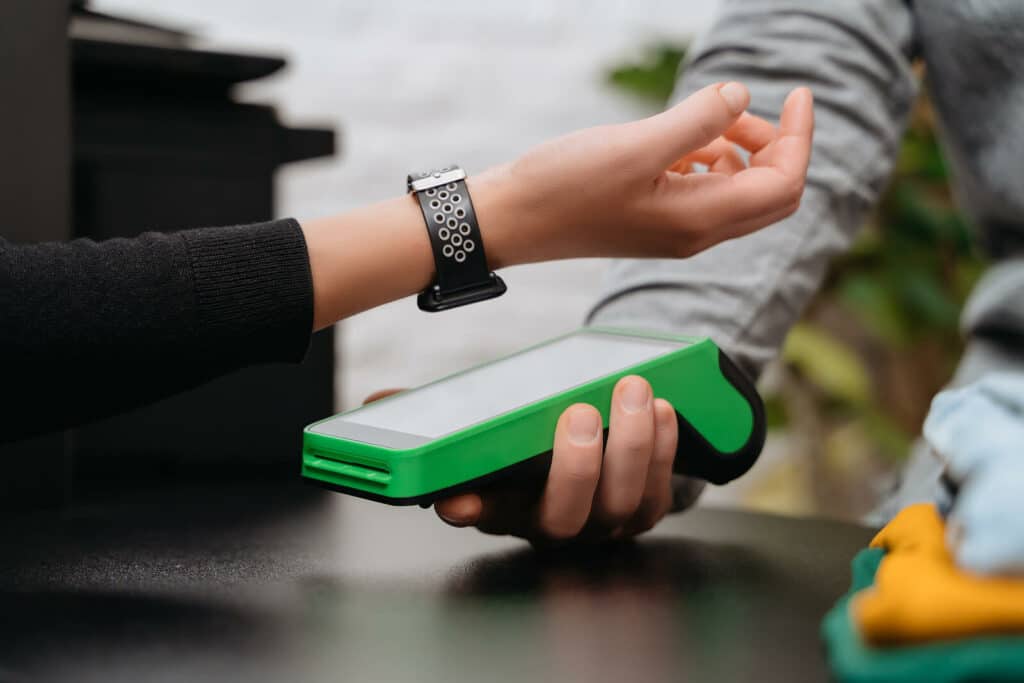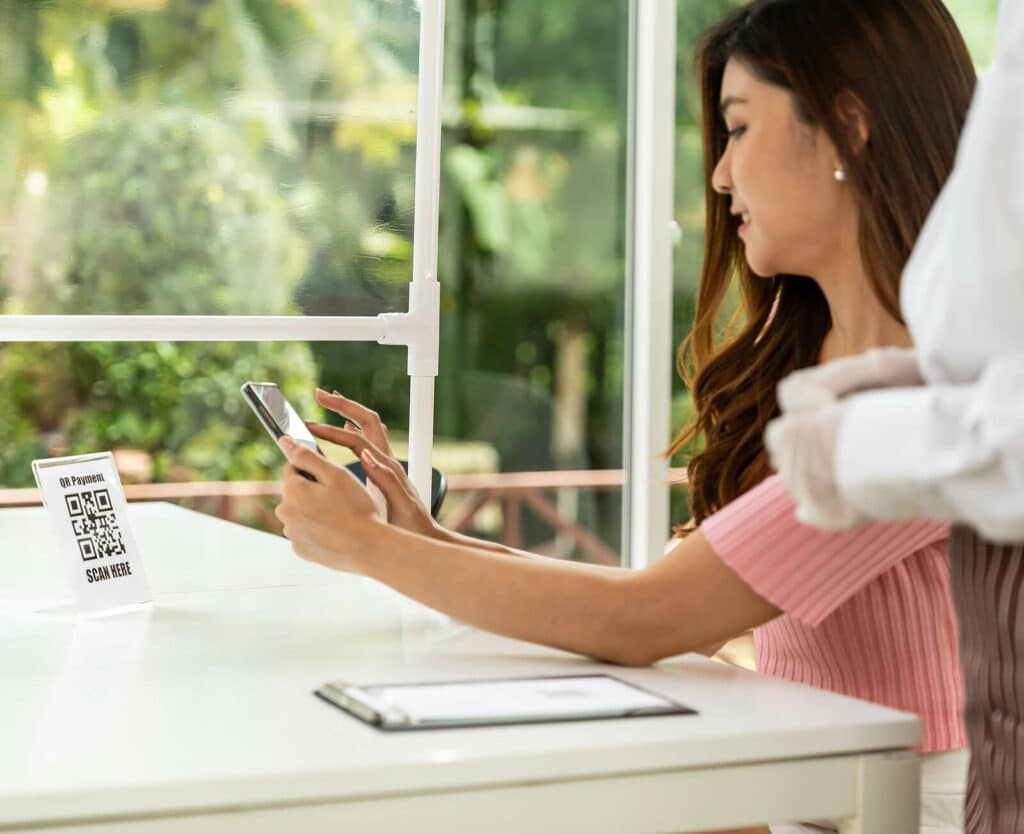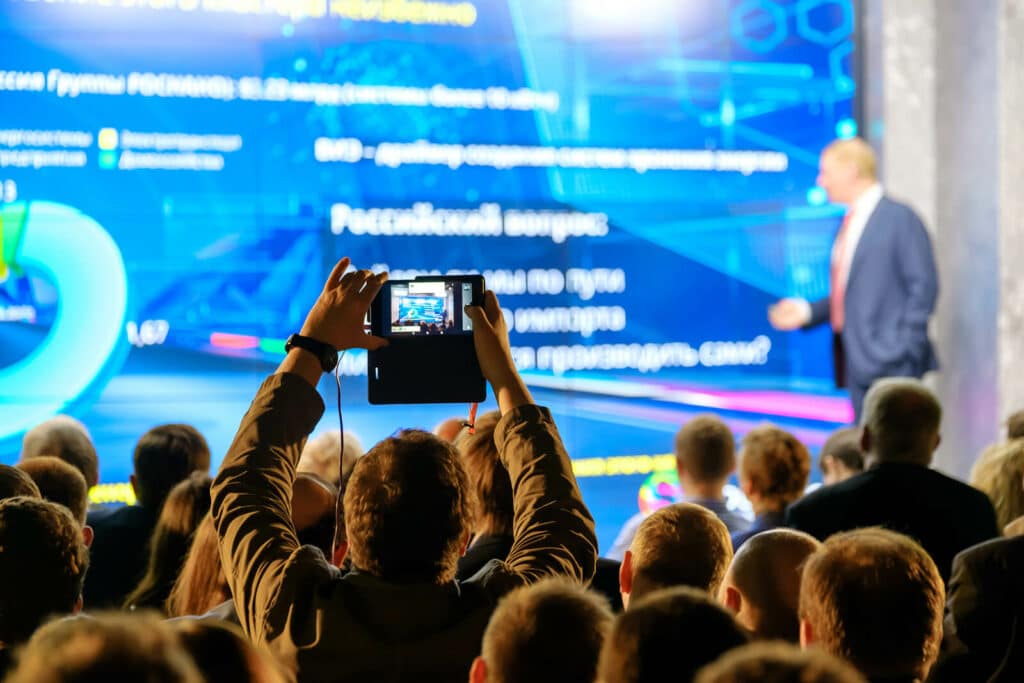The past year has ushered in a new normal, where social distancing and other safety practices are more expected. As a result, many event hosts will be looking to contactless event tech to help them deliver essential services.
QR Codes for Ticketing
An event’s ticketing system can present a prime opportunity for viral transmission—people waiting in line in an enclosed space. And if your ticketing system is slow, you can end up with a big crowd of people jostling for attention. This is the kind of situation that should be eliminated to make events safer for people to attend.
QR codes can provide an alternate means of getting people through the check-in system quickly, with minimal contact. A QR code is a randomly generated pattern of black squares and blank spaces that encodes information in its design. It works in almost the same way a barcode does. The code can be scanned by a dedicated reader or by a smartphone. Scanning the code can act as a digital check-in or can provide the user with information they can read on their phone.
This makes QR codes ideal for use in a contactless ticketing system. People can simply print their own ticket at home. At the event, they need only scan their ticket to check in. Or they can generate their ticket at the event at a QR kiosk.
Near-Field Communication Tech to Power an Entire Event
QR codes are a great option if all you need is a ticketing system, but if you want contactless event tech that does more than check people in, near-field communication (NFC) is a better alternative. NFC can be used in a wide range of ways to minimize unnecessary interactions across an entire event.
Interactions at live events are all about an exchange of information. But that info exchange typically means some kind of shared-object contact; for instance, handing over a business card or writing down an email address.
NFC technology presents an easy solution to this problem. NFC powers the latest wearables, including wristbands and badges. It can connect two electronic devices that are within around 4 centimeters (1.5 inches) of one another. Once they’re in range, those devices can quickly exchange small amounts of information. It’s the same kind of tech that powers contactless payment systems and electronic ticketing. Both of these may now become essential at live events.
Attendees and exhibitors can be issued these items without touching shared surfaces. And an NFC-capable badge or wristband can be printed in seconds. This makes check-in much faster and helps eliminate long wait times. Another advantage is that NFC doesn’t use Wi-Fi—so interruptions to Wi-Fi won’t prevent people from using these contactless services.
How could NFC be used for contactless event tech?
- Wearable badges and wristbands can be issued at check-in without the need to touch shared surfaces.
- Wearables can be loaded with contact info—even a digital wallet that the user loads with money to make event purchases.
- They can facilitate contactless payment at food and beverage vendors—no need to handle money, or even touch a credit-card reader.
- Contactless information exchange at exhibitor booths can replace the use of business cards.
- NFC readers can be used at session check-in points – Attendees only need to tap their badge to the reader to have their attendance tracked almost instantly and with zero contact.
- NFC readers can control access to limited sessions by tracking venue and room capacity.
Another benefit is that using NFC generates user data in real time, showing where people are at your event and what they’re doing. For event organizers, this makes it easy to see when the event is at capacity and when and where bottlenecks form. Once you have this information, you can make adjustments on the fly—for instance, adding additional NFC readers at bottleneck locations—to improve traffic flow and facilitate social distancing.

Mobile Event Apps That Do More
Mobile event apps have been around for a while, but they’re likely to become even more popular as a piece of contactless event tech that minimizes unnecessary interactions. Apps present opportunities for branding and marketing, as well as providing information and other services for attendees. They can also be designed to provide other services that reduce the need for contact. For instance, an event app can help attendees:
- Check-in when they arrive
- Get information from scanned QR codes and wearables, such as badges and wristbands
- Submit questions during a Q&A session, removing the need to pass a microphone
- Make networking appointments and organize leads
- Get all kinds of essential event information via an event bot
This MUST Be in Your Event App
Event Bots That Provide Answers in an Instant
At big events, one of the major points of contact is information kiosks, where people crowd around, looking for answers and directions. Replacing information booths with event bots that answer questions via the event app is an effective way to solve this problem.
An event bot can be included as part of your event app, or it can be provided as a stand-alone app. The bot can deal with thousands of queries at once, providing accurate answers within seconds. And it allows people to get the information they need without waiting in line, adding to crowds, or interacting with staff.
Bluetooth Beacons to Help Attendees Get Around
Another option for helping attendees navigate a venue is the use of beacons. These are low-powered, low-cost transmitters that communicate using Bluetooth technology. Using beacons is another way to minimize unnecessary contact and reduce the need for information kiosks.
Like NFC, beacons don’t rely on Wi-Fi to operate. Instead, they communicate with Bluetooth-enabled devices. This makes them great for pairing with an event app to provide location-specific information. Deploying beacons around the venue can help people get both directions and info, delivered straight to their phone.
Plan a Contactless Event
Hybrid and Virtual Events are the Ultimate Contactless Event Tech Option
The most effective way to reduce the level of risk at an event is to simply reduce the size of the event. A smaller event, with fewer people, is inherently safer than a big, crowded one. But no event organizer wants to have to turn attendees away.
The ultimate solution is a virtual event—one that’s entirely online, attended via computer. But if that’s not a viable option, a hybrid event is the next best thing. With a hybrid event, your live event content is also available online. That allows people to access content conveniently—from anywhere, and lets you reduce the size of the physical event without sacrificing attendance numbers.
Contactless Tech Makes Events Safer for Everyone
For event organizers, contactless event tech may be the key to bringing events back in a form that everyone can enjoy. Contactless options that reduce the need for unnecessary interactions can not only make an event safer. They can also help people feel safer, which will be just as important when in-person events return.









